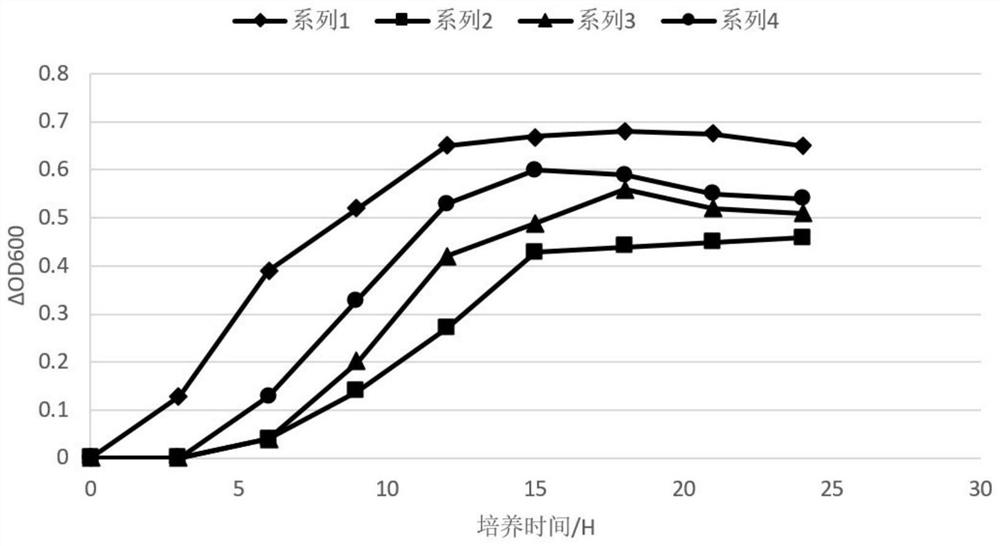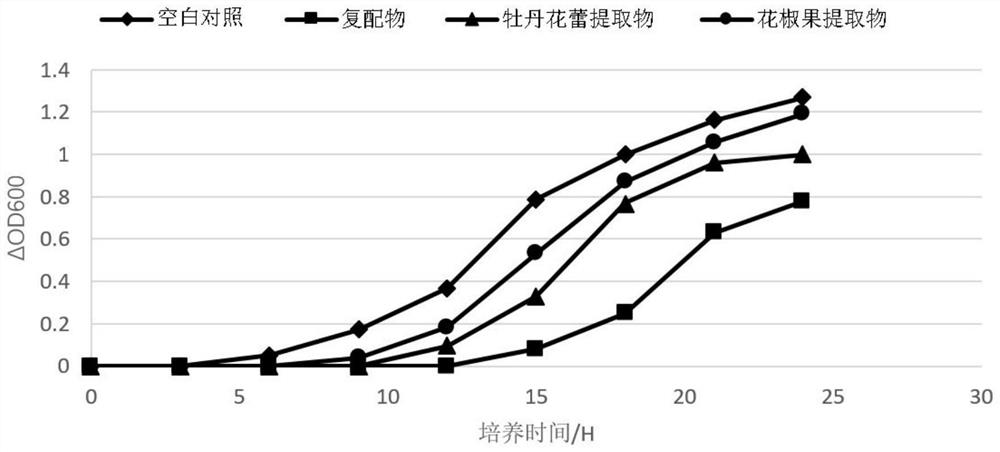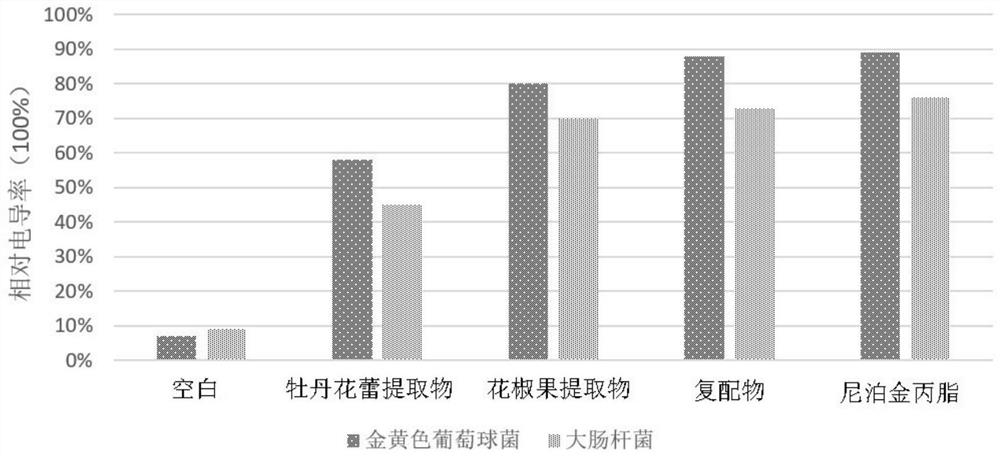A kind of plant source compound bacteriostatic agent
A plant source and bacteriostatic agent technology, which is applied in pharmaceutical formulas, cosmetic preparations, dressing preparations, etc., can solve the problem of low antibacterial activity, achieve strong antibacterial effect, improve antibacterial ability, and broad antibacterial spectrum Effect
- Summary
- Abstract
- Description
- Claims
- Application Information
AI Technical Summary
Problems solved by technology
Method used
Image
Examples
Embodiment 1
[0023] Example 1: Preparation method of peony flower extract:
[0024] Take 40g of peony flowers to dry, grind the fine powder in a 1000mL round bottom flask, add 20 times the volume of 70% ethanol as the extraction solvent, use an electric heating sleeve equipped with a cold flow reflux device, at 60 °C, reflux extraction for 2h, vacuum filtration to collect filtrate, repeat 2 times. The filtrate was concentrated by rotational evaporation in varnish at 40 °C, and stood for standing, and the supernatant was taken to freeze-dried to obtain peony flower extract lyophilized powder.
Embodiment 2
[0025] Example 2: Preparation method of pepper fruit extract:
[0026] Take 25kg of peppercorns, dry the powder at 60 °C, heat the reflux extraction with 95% ethanol for 3 times, each time for 2h, combine the filtrate after filtration, concentrate the filtrate under reduced pressure to extract 600g, add water and suspend it with petroleum ether, dichloromethane, ethyl acetate, n-butanol extract, concentrate under reduced pressure, and obtain n-butanol extract 340g; The n-butanol extract was dissolved with methanol, ethanol, and water, filtered, volatilized and dried into a viscous liquid, sampled onto a macroporous resin that had been eluted with distilled water, enriched with active ingredients, first eluted with an ethanol-water system (0:100~15:85~30:70~50:50~75:25~95:0) for gradient elution, and then used water-methanol system (100:0~90:10~60:40~40:60~0:100) gradient elution, combined eluent, decompression concentration, Spray drying is provided.
Embodiment 3
[0027] Example 3: Determination of bacteriostatic effect (sheet diffusion method):
[0028] The principle of the paper diffusion method: the paper piece containing the quantitative bacteriostatic substance is attached to the agar plate that has been inoculated and measured, and the bacteriostatic substance contained in the paper piece continuously spreads to the area around the paper sheet to form a decreasing gradient concentration. The growth of the test bacteria is inhibited within the range of bacteriostatic concentrations around the paper sheet, thus forming a transparent bacteriostatic circle. By measuring the diameter of the bacteriostatic circle, the strength of the bacteriostatic substance can be judged, and the larger the diameter of the bacteriostatic circle, the stronger the bacteriostatic effect of the drug.
[0029]First, according to the nutrients required by the test bacteria, the corresponding solid medium is prepared, the medium melted and cooled to 45-50 ° C is ...
PUM
 Login to View More
Login to View More Abstract
Description
Claims
Application Information
 Login to View More
Login to View More - R&D
- Intellectual Property
- Life Sciences
- Materials
- Tech Scout
- Unparalleled Data Quality
- Higher Quality Content
- 60% Fewer Hallucinations
Browse by: Latest US Patents, China's latest patents, Technical Efficacy Thesaurus, Application Domain, Technology Topic, Popular Technical Reports.
© 2025 PatSnap. All rights reserved.Legal|Privacy policy|Modern Slavery Act Transparency Statement|Sitemap|About US| Contact US: help@patsnap.com



